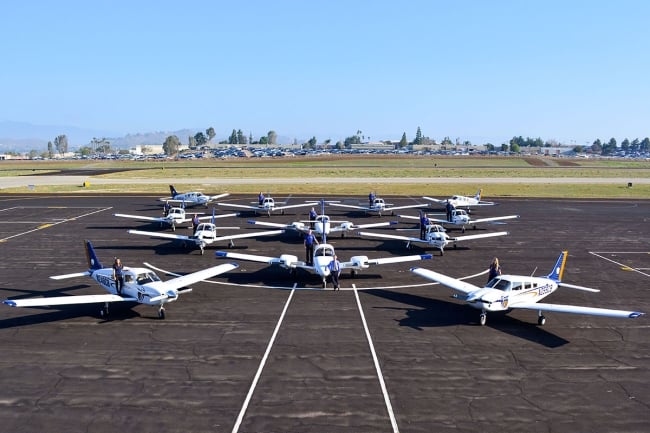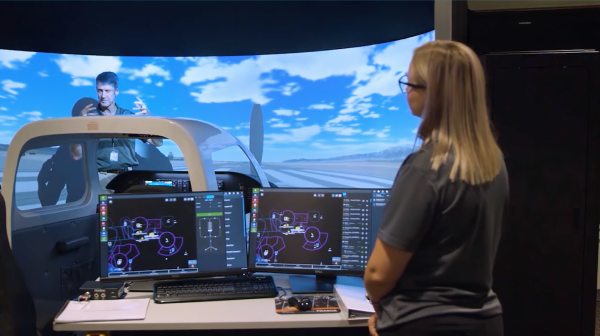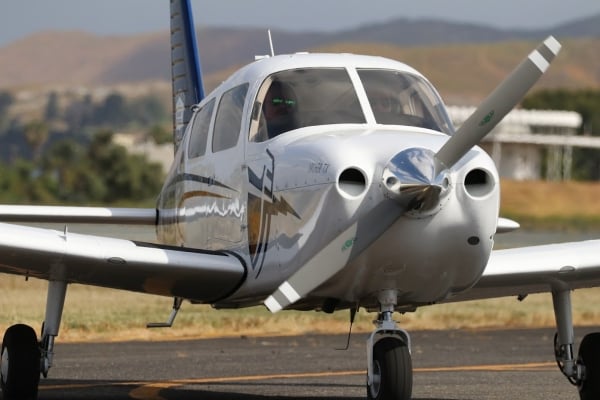You have /5 articles left.
Sign up for a free account or log in.

A new partnership between Alaska Airlines and California Baptist University gives underrepresented minority students the opportunity to receive scholarship funding to help complete their pilot’s license and degree.
California Baptist University
A new scholarship program at California Baptist University is helping students soar into their dream careers with Alaska Airlines.
Cal Baptist, a designated Hispanic-serving institution, is the third collegiate partner in Alaska Airlines’ True North program, joining two HBCUs, the University of Maryland Eastern Shore and Delaware State University. True North is designed to help fulfill a need for new pilots in the commercial airline industry from diverse backgrounds by providing financial and career support to young talent while they’re in college.
True North officially kicks off this month at Cal Baptist, with a few select students receiving up to $50,000 in scholarship money.
What’s the need: The aviation industry faces a shortage of pilots nationally, with around 16,000 positions projected to open annually over the next decade in the U.S., but new talent is hard to come by—especially diverse young talent.
Around 95.7 percent of pilots and flight engineers are white. Only 9.2 percent are women, 2.6 percent are Black, 1.9 percent are Asian and 9.7 percent are Latino, according to 2022 estimates from the U.S. Bureau of Labor Statistics.
Cal Baptist’s aviation program of 200 students, in comparison, is 30.8 percent Latino, 2.5 percent Black, 7 percent Asian and 1 percent American Indian/Alaska Native, and 12.6 percent of students identify with two or more races.
Flight training can also be expensive, running around $100,000 for an aspiring airline transport pilot to get all their ratings, including instrument rating, commercial pilot’s licenses and 1,500 hours of flight time.
“Cost is always prohibitive [for some students], and it’s not just aviation; however, aviation has a lot more additional demands,” says Phil Van Haaster, dean of the College of Engineering at Cal Baptist. “It’s not just sitting in the classroom, it’s being in a very expensive airplane and you’re one-on-one with a very expensive flight instructor.”
Cal Baptist’s program can be more cost-effective for students because universities can award commercial licenses after 1,000 hours of flight time, but the Commercial Flight Lab 1 Fee and Commercial II Airline Pilot certificate alone cost $19,571 and $13,951, respectively.
“It’s not a matter of return on investment; anybody can look at it and say it’s going to be a great return on the investment,” Van Haaster says. “But if I don’t have anything to invest, how do I get my return?”
The background: Cal Baptist, the first West Coast partner in the True North program, is a natural fit because graduates tend to work with airlines with hubs that are geographically close, says aviation science professor John Marselus.
Alaska has hubs in California, at Los Angeles International Airport and San Francisco International Airport, and at Oregon’s Portland International Airport, Washington’s Seattle-Tacoma International Airport and Alaska’s Ted Stevens Anchorage International Airport, “but now they just acquired Hawaiian Airlines, so who knows?” Marselus adds.

Prior to flying a plane, CBU students work with a flight instructor on a simulator.
California Baptist University
CBU’s aviation program is about 10 years old, but it’s been recognized by Horizon Air executives for over two years for its work in training professionals. The university manages a fleet of 20 aircraft, employs over 60 certified flight instructors and flies out of Riverside Municipal Airport, two miles from campus.
Marselus said he was also involved in initial conversations with Horizon and Alaska in developing True North prior to the agreement with CBU being formally signed.
How it works: The program provides a direct talent pipeline for all selected students to become a first officer for Alaska Airlines. All participants receive up to $50,000 in financial support and a guaranteed interview with the airline after completing their schooling.
CBU’s aviation program is designed for students to be productive from their first week in their industry through experiential learning and mentorship, Van Haaster says.
“One of the big values in this program is that Alaska is interested in the person while they’re still a student, not just when they’re graduating, not just when they’re ready to come and work for them,” Van Haaster says. “They want to be part of the development of the student as well.”
In selecting candidates, CBU and Alaska staff will evaluate a student’s discipline, knowledge, capacities and professionalism, Marselus says.
After graduating from Cal Baptist, students must complete their license to become an airline transport pilot and commit to working with Alaska or Horizon for a total of five years.

Student pilots must complete up to 1,000 hours of flight time to earn a commercial license, which allows them to fly for major airlines like Alaska.
California Baptist University
What’s next: More details on candidate eligibility and the number of participants in the program are still being determined. Alaska staff will observe and evaluate students as potential candidates as early as this coming semester, as well.
The program will only support a few students each term, but having a partnership with Alaska is a benefit for Cal Baptist in making aviation’s affordability more visible to students and their families, Van Haaster says.
If your student success program has a unique feature or twist, we’d like to know about it. Click here to submit.




